#knowledgetransfer
Explore tagged Tumblr posts
Text
Project Manager knowledge transfer is not just a task; it’s a strategic process that ensures continuity, efficiency, and success. By starting early, documenting thoroughly, and using structured frameworks, organizations can mitigate risks and empower incoming PMs to hit the ground running.
Remember, knowledge transfer is an investment in your team’s ability to navigate transitions with confidence and agility. Prioritize it, and watch your projects and your team thrive.
#ProjectManagement#KnowledgeTransfer#PMHandover#ContinuityPlanning#Leadership#StakeholderManagement#Documentation#LessonsLearned#RiskManagement#TransitionSuccess#EfficientProcesses#ProjectSuccess#KnowledgeSharing#CollaborationTools#Teamwork
0 notes
Text
DOORS wins “Best Project Award” at CMA 2024!

We are proud to share the news that DOORS has won the “Best Project Award” at the 2024 Annual Conference of the Common Maritime Agenda community (Black Sea countries + EC - DG MARE). We were recognised alongside Connect Black Sea for the Category "Competitive, Innovative and Sustainable Blue Economy in the Black Sea".

DOORS is delivering 3 key programmes for critical Black Sea regeneration:
The System of Systems (SoS) - A one stop shop for standardised data and model outputs to drive evidence-based knowledge development for the Black Sea. A first of its kind for the region, the SoS delivers data from in-situ measurements and sensor arrays, satellite based #EarthObservation, external repositories, and model outputs into a single interactive visualisation platform for the Black Sea with harmonised data models. The SoS is now live online here.
The Black Sea Accelerator (BSA) which also received an 'Honourable Mention' at CMA 2024, is a joint initiative by DOORS Black Sea and BRIDGE Black Sea supporting business creation, marine and maritime innovation, and the development of new marine-based technologies for sustainable growth. This summer, we have delivered a series of high level trainings on business models, pitching and how the SoS can be used to benefit the Blue Economy across the region.
Our Knowledge Transfer and Training (KTT) programme has conducted extensive stakeholder engagement with everyone interested in the future of the Black Sea through workshops, training and ocean literacy events. We have recently funded 6 exchange placements through an international programme of collaborative research activities, investing in the scientists of the future.

After receiving the award, The DOORS Project Coordinator, Adrian Stanica of GeoEcoMar (GEM), said “This prize is a symbol and a recognition to all Our work. We have made a lot of progress in difficult times - and DOORS has become a reality through the work of each and everyone of you. As coordinator of the project I feel humbled to have such a great team.“
0 notes
Text
Day 12: Learning Styles in Adults
Day 12: Learning Styles in Adults Identify Learning Styles: Exploration of Learning Style Models: VARK Model: Understand the VARK model, which categorizes learners into Visual, Auditory, Reading/Writing, and Kinesthetic styles. Recognize that individuals may have preferences for one or more of these styles. Honey and Mumford’s Learning Styles: Explore Honey and Mumford’s Learning Styles,…
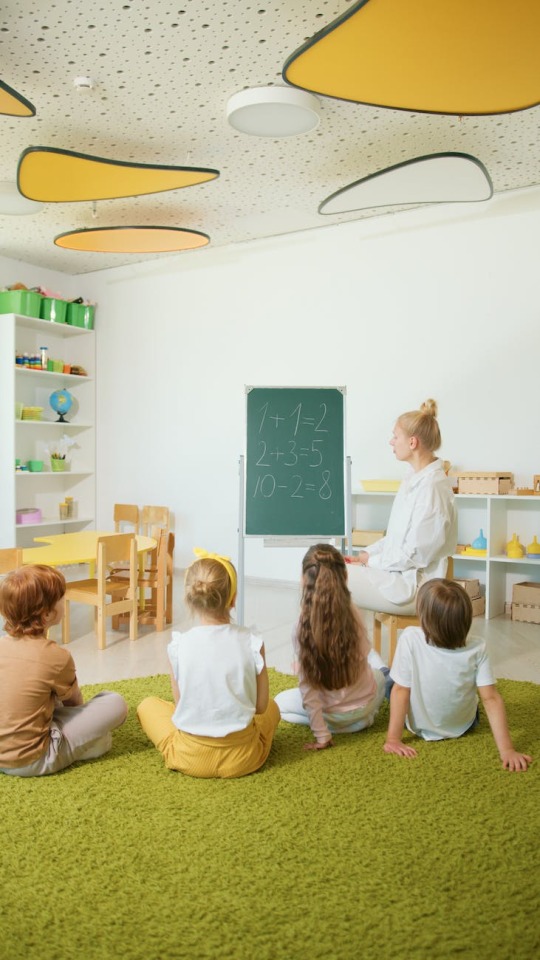
View On WordPress
#CareerDevelopment#ContinuousLearning#DevelopmentOpportunities#education#Elearning#EmployeeTraining#KnowledgeTransfer#LeadershipDevelopment#learning#learning-styles#LearningAndDevelopment#LearningCulture#LearningManagementSystem#LearningResources#OnlineLearning#PerformanceImprovement#PersonalDevelopment#ProfessionalDevelopment#self-improvement#SkillBuilding#SkillsDevelopment#teaching#Training#TrainingPrograms#WorkplaceLearning
0 notes
Text
Ichiban Sushi Urged to Prioritize Local Residents in Employee Recruitment
#IchibanSushi #CulinaryBusiness Ichiban Sushi Urged to Prioritize Local Residents in Employee Recruitment
Hargo.co.id, GORONTALO – Ichiban Sushi is now present in Gorontalo. One of the culinary businesses, located in Citymall Gorontalo, was inaugurated by the Deputy Mayor of Gorontalo, Ryan F. Kono, marked by a ribbon-cutting ceremony on Friday (12/1/2023). “Until now, Gorontalo City continues to be a target for investors to expand their businesses. The latest addition is Ichiban Sushi, which has…

View On WordPress
#Citymall#CulinaryBusiness#Gorontalo#GorontaloCity#IchibanSushi#KnowledgeTransfer#LocalEmployment#RyanFKono
0 notes
Text
Digital Insights Newsletter - Telliant Systems
We're excited to announce the release of our latest newsletter "Digital Insights"! Discover fresh insights, updates, and inspiration in every issue. Click the link to read it now.
#newsletter#signup#softwaredevelopment#web3#web3technology#web3tech#techstack#SaaS#SaaSapplication#cloudservices#cloudprovider#knowledgetransfer#apimanagement#api#technologytrends
0 notes
Photo

UGC approves new guidelines for University-Industry collaboration on R&D ChatGPT
#UGC#UniversityIndustryCollaboration#R#ResearchAndDevelopment#AcademicIndustryPartnership#Innovation#KnowledgeTransfer#CollaborativeResearch#IndustryAcademiaCollaboration
0 notes
Text
Best Technical Writing Services in USA at Affordable Prices
Technical writing plays a vital role in the field of engineering. Engineers are responsible for designing, developing, and maintaining complex systems, and effective communication is crucial for their success. In this blog post, we will explore the importance of technical writing in engineering and how it contributes to the efficiency, accuracy, and overall effectiveness of engineering projects.

Clear Communication: Engineering projects involve collaboration among multidisciplinary teams comprising engineers, designers, project managers, and stakeholders. Technical writing allows engineers to communicate complex ideas, specifications, and requirements clearly and concisely. By using precise language and visual aids, technical documents bridge the gap between technical experts and non-technical stakeholders, ensuring everyone understands the project objectives and progress.
Documentation of Design and Development: Technical writing provides a means to document the design and development process of engineering projects. Detailed documentation allows engineers to maintain an organized record of decisions, iterations, and modifications made throughout the project lifecycle. This documentation serves as a reference for future improvements, troubleshooting, and maintenance, saving time and effort in the long run.
Standardization and Consistency: In engineering, standardization is crucial for ensuring consistency, safety, and quality. Technical writing plays a pivotal role in documenting standards, specifications, and procedures that must be followed during the design, construction, and operation of systems. Standardized technical documentation allows engineers to maintain consistency across projects, facilitates knowledge transfer, and ensures compliance with industry regulations and best practices.
Effective Problem Solving: Engineering projects often involve complex problem-solving scenarios. Technical writing helps engineers break down complex problems into manageable steps, facilitating systematic analysis and resolution. By documenting troubleshooting processes, guidelines, and solutions, technical writers provide engineers with valuable resources that aid in resolving issues efficiently and effectively.
Knowledge Transfer and Training: Technical writing enables the transfer of knowledge from experienced engineers to new team members. By documenting best practices, lessons learned, and standard operating procedures, technical writers help onboard new engineers and ensure continuity within the organization. Training materials, manuals, and guides developed through technical writing empower engineers to acquire the necessary skills and knowledge to work on diverse projects.
Client and Stakeholder Communication: Engineering projects involve interactions with clients and stakeholders who may not possess technical expertise. Technical writing helps bridge this communication gap by translating complex engineering concepts into easily understandable language. Documents such as project proposals, reports, and progress updates provide stakeholders with a clear understanding of project goals, timelines, and deliverables, fostering trust and collaboration.
Safety and Compliance: In many engineering fields, such as civil engineering, mechanical engineering, and chemical engineering, safety is of paramount importance. Technical writing plays a critical role in documenting safety procedures, risk assessments, and compliance guidelines. Engineers rely on these documents to ensure that projects meet regulatory requirements, minimize hazards, and protect the well-being of workers and the public.
Effective Project Management: Technical writing contributes to effective project management by facilitating clear communication, setting project expectations, and documenting project milestones. Project documentation, including project plans, schedules, and progress reports, allows engineers and project managers to track project progress, identify bottlenecks, and make informed decisions to keep projects on track.
Intellectual Property Protection: Technical writing aids in protecting intellectual property by documenting engineering innovations, designs, and inventions. Patents, technical specifications, and research papers help establish ownership and prevent unauthorized use or replication of intellectual property. Technical writers work closely with engineers to accurately document and protect their creative work.

Conclusion:
In the field of engineering, technical writing is not merely a peripheral skill; it is an essential component for success. From clear communication and documentation of design to effective problem-solving and compliance, technical writing plays a pivotal role in ensuring efficient and accurate execution of engineering projects.
#technicalwriting#engineeringcommunication#effectivedocumentation#knowledgetransfer#clearcommunication#standardizationInengineering#problemsolving#projectmanagement#safetyandcompliance#intellectualpropertyprotection
0 notes
Note
what is your favourite scene with Colress in the anime ? ^^
Thank you so much for the ask!😆💙
My favourite scene from the anime? I have many scenes I really like, but if I had to choose it would be his encounter with Team Rocket. Meowth trying to strike a deal with Colress was a really interesting scene to see, since Meowth points out Colress doesn't really like to work for Team Plasma and offering him the chance to work with Team Rocket instead.
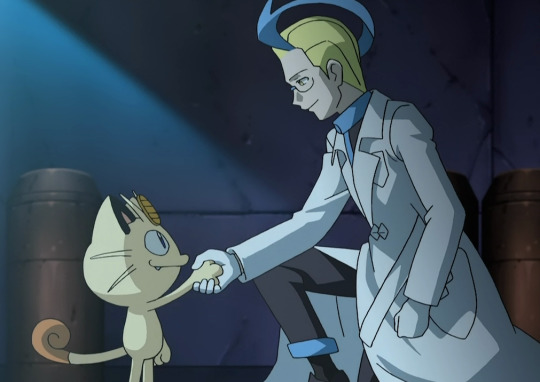
There are not many Pokémon that are able to speak the human language and since he is interested in bringing out the true power of Pokémon, that would be of great interest for him. In my opinion good communication is the key to success and this is also shown in the anime, where Pokémon are stronger when they trust and understand their trainer well.
When he gets arrested in the anime he even says that he would like to create an device to understand the Pokémon language. So indeed Meowth would be a very interesting test subject for him! Also Colress and Meowth shaking hands was so cute!✨
There is also a great Colress AMV(?) on youtube that compiles all of my favourite anime scenes. I really recommend watching it!
youtube
11 notes
·
View notes
Text
Happy furahi day! The amazing CHETI schools have committed to dedicating every friday to teaching students about the animals featured in the Journey along the Tarangire project! This week they explored zebras using the guides and crafts we shared during our visit in Sept! Best way to end the week! #chetingo #zebras #learningadventure #journeyalongtarangireriver #knowledgetransfer #teachers #happyfurahiday
instagram
0 notes
Text
Today is the third and last day of this year’s service technician training for our German speaking partners & distributors!
With a solid theoretical basis being taught in the first days, the focus of yesterday’s and today’s session is: practice! The h/p/cosmos service technicians guide our partners through the installation and commissioning process of our latest treadmill series 150/50 G7 (pluto/mercury) with the UserTerminal Touch (Pro).
Thanks to all partners who take part in our regular service trainings to deliver outstanding services in the field!
The next international service training will be announced soon!
#servicetraining #customerservice #customerexperience #knowledgetransfer
#treadmill#biomechanics#rehabilitation#performance#hpcosmos#laufband#gaitway#neurorehabilitation#neuroplasticity#mcu6
0 notes
Text

This colorful infographic demystifies the concept of transfer learning in machine learning. It illustrates how a pre-trained source model serves as a foundation for a target model, which is then fine-tuned with new data for specific tasks. The flowcharts depict the process from input to output using the source model and the transfer of knowledge to the target model. Neural network layers, including convolutional (CNN) and fully connected (FC) layers, adapt to classify thousands of classes in the source model and binary classes in the target model.
🎨 Why It’s Interesting:
Simplifies a complex topic for learners.
Engages viewers with vibrant visuals.
Makes transfer learning accessible.
#TransferLearning
#MachineLearning
#DeepLearning
#NeuralNetworks
#AI
#DataScience
#ModelTraining
#FineTuning
#SourceModel
#TargetModel
#ConvolutionalLayers
#FullyConnectedLayers
#KnowledgeTransfer
#PretrainedModel
#BinaryClassification
#ArtificialIntelligence
#TechExplained
#VisualLearning
#Infographic
#LearnML
#MLConcepts
#EducationalContent
#Simplified
#ComplexTopics
#VisualizeML
#UnderstandingML
#MLBeginners
#MLExploration
#MLCommunity
#MLForAll
1 note
·
View note
Text
At the end of a project, one critical task often overlooked is the release of project resources. These resources need to be managed effectively to ensure a seamless transition and maintain operational efficiency. A structured approach to resource release not only wraps up the project efficiently but also sets a positive tone for future endeavors.
This blog provides a guide on how to release project resources strategically.
#ProjectManagement#ResourcePlanning#TeamManagement#EfficientTransitions#ResourceRelease#ProjectCompletion#WorkforceManagement#KnowledgeTransfer#LessonsLearned#TeamCelebration#ProjectWrapUp#FuturePlanning#SmoothTransitions#ResourceUtilization#PMStrategy
0 notes
Text
From Barcelona to the Black Sea in the hunt for marine litter
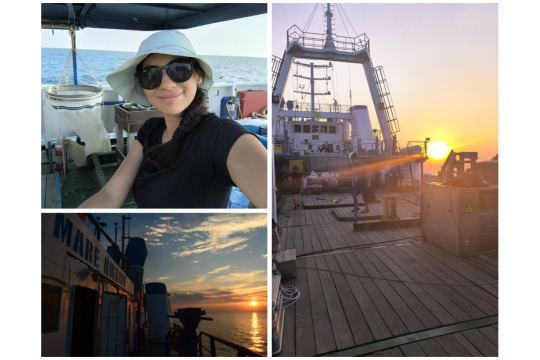
As part of the DOORS Early-Stage Researcher Exchange (ESRE) programme, Leidy Castro from the Maritime Engineering Laboratory of the Universitat Politècnica de Catalunya · BarcelonaTech (LIM / UPC) and the Universitat de Barcelona (UB), undertook a collaborative research project with GeoEcoMar (GEM) in Romania, aimed at tackling marine litter in the Black Sea.
Leidy’s research proposal was titled "Analysis of spatial distribution of marine litter pollution in the western Black Sea through numerical model integration and in situ measurements.” The exchange was supervised by Dr. Iulian Pojar Vintilă of GeoEcoMar and began at their facilities in Bucharest to learn about to learn about microplastic sample treatment, digestion, and final counts.
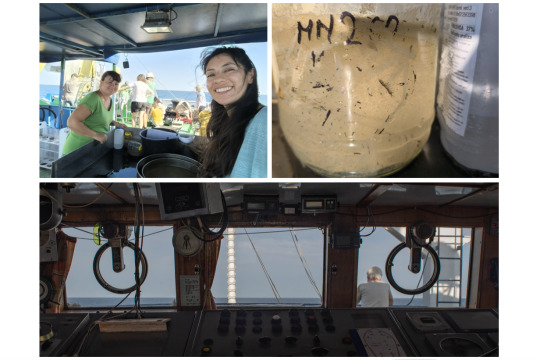
She says, “I had the pleasure of sharing time with Teodora, who guided me through all the laboratory processes. Following this, I joined an oceanographic expedition aboard the R/V Mare Nigrum from Constanța, led by Dr. Dan Vasilu as Chief Scientist. The team of researchers onboard was very welcoming and taught me about all the processes and measurements involved in a scientific oceanographic campaign.”
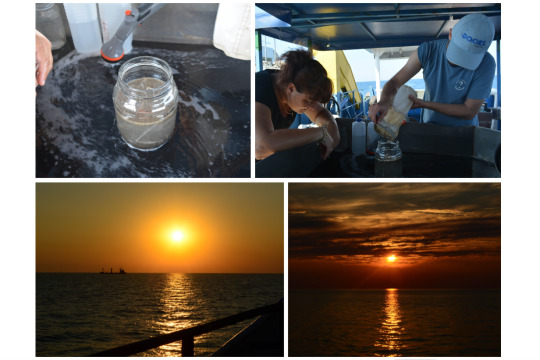
The research addresses the pressing issue of marine litter pollution in the Black Sea, focusing on both microplastics and macroplastics. In addition to the surface microplastic (plastics smaller than 5mm) sampling, the team conducted observations of microplastics (plastics greater than 5mm) from the bow of the ship during specific transects between predefined stations. This allowed them to gather in situ data on plastic density per square kilometre and identify possible "hotspots" of marine litter accumulation. These findings can be compared with numerical model predictions, specifically using the LOCATE model adapted for the Black Sea. The ultimate goal is to create a baseline of current pollution levels and to validate models that predict the movement and final destination of marine litter. This is crucial for decision-makers to develop strategies that prevent further accumulation and contamination of both open waters and coastal areas.
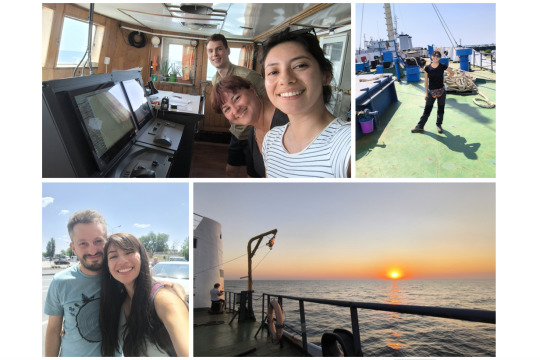
This is just one example where we have matched early stage research interests with the scientific work ongoing in the project. This summer we have funded and supported 5 other placements through the DOORS Early-Stage Researcher Exchange (ESRE). This is an international programme of collaborative research mobility activities, to foster and deepen connections within and between Black Sea countries, and international partners across Europe.
The placements have covered a range of topics supporting students from universities all over Europe:
Olga Schmitz (Germany)- Collaborative Initiative for Enhanced Water Quality Monitoring in the Black Sea Region.
Leidy Maricela Castro Rosero (Spain) - Analysis of spatial distribution of marine litter pollution in the western Black Sea through numerical model integration and in situ measurements.
Tatiana Sitchinava (Georgia) - Towards Sustainable Coastal Communities: Understanding and Mitigating Marine Litter in Romania’s Black Sea Beaches.
Alessandro Galdelli (Italy) - Advancing Marine Research through Strategic Collaboration: Integrating Cutting-edge Algorithm for Enhanced Fishing Effort Estimation in the Black Sea,
Florin Miron (Romania) - Analysing Coastal Hydrodynamics and Discharge at River Mouths: The Impact of Winds and Waves on Hydrological Processes Using SWOT Satellite Data,
Sofia Sadogurska (Ukraine) - Taxonomic studies of the Black Sea brown algae (Phaeophyceae, Heterokontophyta).
Remarking on her placement, Leidy said “This experience has been incredibly meaningful to me, both personally and professionally. It was my first time seeing the Black Sea, which holds special significance as I've spent the past three years studying it from behind a computer screen. Being part of this oceanographic expedition allowed me to witness first-hand the marine environment I've been modelling for so long, making the research more tangible and real. I learned a lot about the logistics and challenges of conducting an oceanographic campaign and was able to build valuable connections with fellow researchers and fellow cruisers like Bianca, Mihaela (both of them), Rok, Sorin, Stefano, and others. The warmth and support from both the scientific team and the ship’s crew made this experience truly memorable.”
youtube
You can follow Leidy’s journey on Instagram , LinkedIn and X, and learn more about her research.
0 notes
Text
Day 11: Characteristics of Adult Learners
Day 11: Characteristics of Adult Learners Identify Adult Learning Characteristics: Exploration of Unique Characteristics: Self-Directedness: Recognize that adult learners are generally more self-directed in their learning. Understand that they prefer taking control of their learning experience, setting their own goals, and managing their progress. Practicality: Explore the characteristic…

View On WordPress
#Training#CareerDevelopment#ContinuousLearning#DevelopmentOpportunities#education#Elearning#EmployeeTraining#instructional-design#KnowledgeTransfer#LeadershipDevelopment#learning#LearningAndDevelopment#LearningCulture#LearningManagementSystem#LearningResources#OnlineLearning#PerformanceImprovement#PersonalDevelopment#ProfessionalDevelopment#SkillBuilding#SkillsDevelopment#teaching#TrainingPrograms#WorkplaceLearning
1 note
·
View note
Text
Do we underestimate the challenges of transferring knowledge from its original context to a different context? Discuss concerning two areas of expertise.
🌐 Transferring Knowledge Across Contexts: Navigating Challenges 🌐
Ever wondered why groundbreaking scientific discoveries sometimes seem to falter when brought into the real world? Or why historical insights struggle to find resonance in different cultural settings? Let's delve into the complexities of transferring knowledge between contexts!
Challenges of taking knowledge out of its original context and transferring it to a different one
🔬 Scientific Discoveries vs. Real-World Impact
The Higgs boson: A monumental find in particle physics, yet its real-world applications remain elusive.
DNA structure revelation: While revolutionizing genetics, it took years for practical applications in biotechnology to emerge.
Cosmic microwave background radiation: Crucial for the Big Bang theory but lacking immediate real-world applications.
First exoplanet discovery: A major leap in astronomy with no immediate practical applications.
Hubble Deep Field: Revolutionized our cosmic understanding, but its impact on everyday life is minimal.
In these cases, we've underestimated the challenges of knowledge transfer.
The Language and Cultural Barriers
🗣️ Jargon and Vocabulary Challenges
Every field has its own language, making it challenging for outsiders to grasp complex ideas.
The language barrier poses a risk of misunderstood and misinterpreted concepts.
🌍 Cultural Differences
Diverse values, customs, and beliefs hinder seamless knowledge transfer.
One culture's norm might be alien to another, complicating the understanding of shared knowledge.
Defining Knowledge Contexts
🔍 What is "Context"?
Historical, social, and cultural elements influencing knowledge interpretation and application.
Scientific knowledge shaped by cultural and historical environments; creative knowledge linked to social and cultural practices.
Challenges of Decontextualization
🔄 Risk of Losing Meaning
Knowledge loses significance when removed from its original context.
Cultural variations may render scientific or artistic knowledge irrelevant in new settings.
Historical and Cultural Contexts
🕰️ Impact of Historical Events
Historical contexts affect the transferability of knowledge.
Medical knowledge from ancient China may not align with modern Western practices.
🌐 Cultural Sensitivity in Knowledge Transfer
Comprehending the cultural values of the receiving setting is crucial.
Disseminating knowledge should respect and incorporate indigenous perspectives.
The Role of Experimentation
🧪 Experimentation's Challenges
Control factors in experiments; real-world variations may alter outcomes.
Scientific theories and paradigms may not apply in different contexts.
Artistic Interpretations
🎨 Subjectivity in Art
Viewer experiences, cultural backgrounds, and biases influence artistic interpretations.
Meaning may be lost in translation when transferring art across cultures.
🤝 Cross-Cultural Artistic Understanding
Interpreting art from different cultural perspectives is challenging.
Abstract forms and symbols may hold different meanings in various cultures.
Conclusion
🔗 Knowledge Transfer Complexity
Transferring information demands careful consideration of original and current contexts.
Challenges in both science and history underscore the need for interdisciplinary collaboration.
🌐 Interdisciplinary Cooperation is Key!
Bridging gaps through collaboration ensures effective communication across diverse disciplines.
A comprehensive strategy for knowledge creation and use addresses the complex challenges we face today.
💡 In Summary: Embrace the Challenges, Foster Collaboration! 💡
KnowledgeTransfer #Interdisciplinary #ScienceAndCulture #ContextMatters
0 notes
Quote
Measure what is measurable. Make measurable what is not.
Galileo Galilei
1 note
·
View note